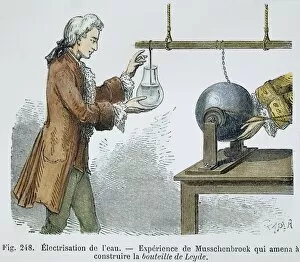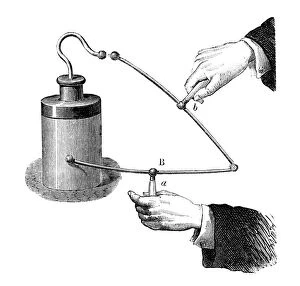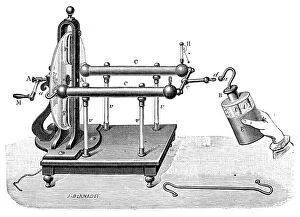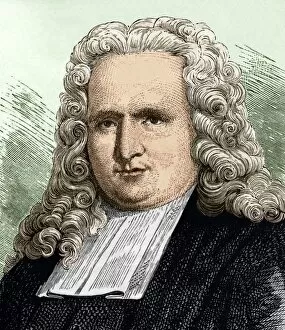The Leyden Jar: A Revolutionary Discovery in the World of Electricity Step into the world of scientific breakthroughs and witness the birth of an incredible invention - the Leyden jar. This captivating device, also known as "Bouteille (de Leyde)" or "Leydener Flasche, " has left an indelible mark on history. Intriguingly depicted in various forms throughout art, such as "The Cure for a Headache" and "Physics, 1833-39, " this ingenious creation was first discovered in 1745 by Pieter van Musschenbroek and Andreas Cunaeus, two brilliant Dutch scientists. The image from 1894 beautifully captures their momentous achievement. Immerse yourself further into this fascinating tale with an enchanting engraving from c1870 by CL van Kesteren. Van Musschenbroek's wood engraving showcases his remarkable invention that revolutionized electricity forever. As time progressed, so did our understanding of electricity. Witness its evolution through stunning depictions like "Electricity, c1891" and "Electricity, c1850. " These images transport us to a time when experimentation with electrical currents was at its peak. Marvel at the power contained within a single Leyden jar - a charge so potent it could light up cities. Discover how these jars were used to create electric batteries in the 18th century as shown in an intriguing engraving titled "BATTERY, 18th CENTURY. " But what exactly is a Leyden jar? It is a glass container capable of storing static electricity. Its design consists of inner and outer conductive coatings separated by insulating material – often water or oil – creating immense potential energy waiting to be unleashed. Witness the discharge of this electrifying device in action through captivating illustrations like "Discharging the Leyden jar" or observe its interaction with electric machines as seen in"The Leyden jar communicates with the electric machine.

























